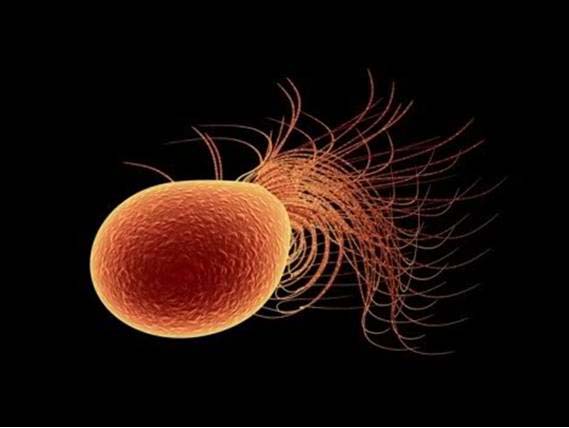
ARPA-E Projects Seek New Ways to Fuel Your Summer Travels
August 24, 2015
Americans spend a lot of time – and energy – driving and flying. The average U.S. driver logs about 13,000 miles every year. To fuel our commutes and summer road trips, Americans last year consumed more than 136 billion gallons of gasoline, which accounts for 60% of U.S. oil demand and is responsible for a quarter of the nation’s greenhouse gas emissions. On the commercial side, more than 10.3 billion gallons of jet fuel were consumed in 2014 by U.S. airlines alone.
With the busiest driving and travel season in full swing, fuel efficiency becomes particularly important and dependence on oil to fuel transportation can result in negative consequences for consumers and the environment. By developing alternative sources of sustainable, affordable transportation fuel we can lessen our reliance on foreign energy and reduce emissions – both of which are core statutes of ARPA-E’s mission.
An example of ARPA-E’s work in innovative alternative fuel research is seen in two projects out of North Carolina State University and the recently announced Transportation Energy Resources from Renewable Agriculture (TERRA) program.
Jet Fuel from Camelina Sativa: A Systems Approach (PETRO Program)
Technologies for low-cost production of advanced biofuels are limited by the small amount of available energy captured by photosynthesis and the inefficient processes used to convert plant matter to fuel.
Vegetable oil is a good feedstock for the production of energy-dense liquid transportation fuels for aviation and marine uses. However, most crop plants grown for oil have low productivity or are used for food and/or feed purposes. Camelina sativa is an oil seed plant, closely related to canola, but requires lower energy input compared to other oil seed plants. It can therefore grow on land not suitable for food or feed production.

Photo: ARPA-E Program Director Jonathan Burbaum and Tech-to-Market Advisor TJ Augustine in a field growing engineered Camelina
The goal of North Carolina State’s project was to increase the seed and oil yield, and modify the fatty acid chain length in the Camelina seed oil for more energy-efficient conversion to fuels. The genetic improvements resulted in more than 80% increase in seed and oil yield. The team also increased the transport of sugar from the sites of synthesis in the leaves to the sites of consumption and storage in the non-photosynthetic tissues like roots and seeds, leading to additional increases in oil yield. To optimize oil composition in the seeds, several genetic modifications were successful in reducing the chain length of the fatty acids. In contrast to wild type plants that produce no fatty acids (C12-C16), these transgenic plants can produce up to 40% of these fatty acids in their oil, which improves conversion to fuel by minimizing carbon loss.

Photo: Camelina sativa
Currently, the North Carolina State project team is integrating different genetic traits to further increase yield and optimize oil composition, and collaborating on field tests. The team’s technoeconomic analysis has shown that a 70% increase in yield will more than triple a farmer’s profit from Camelina while reducing the impact of fertilizer and fresh water use. In many areas of the U.S., the climate allows farmers to grow Camelina as an inter-crop between major summer and winter crops, further improving its profitability while reducing competition with food and feed production.
Liquid Fuel from Heat-Loving Microorganisms (Electrofuels Program)
Domestic biofuels are viewed as a more sustainable and therefore more attractive alternative to petroleum-based transportation fuels. Biofuels are produced from plant matter, such as sugars, oils and biomass. This plant matter is created by photosynthesis, a process that converts solar energy into stored chemical energy in plants. However, photosynthesis is an inefficient way to transfer energy from the sun to a plant. The technology developed by North Carolina State bypasses photosynthesis by using self-reliant microorganisms that can directly use hydrogen generated from renewable electricity to convert CO2 to liquid fuels.

Photo: Example of hyperthermophile Pyrococcus furiosus. Image credit: MST
In this project, North Carolina State worked with the University of Georgia to create electrofuels from primitive organisms called extremophiles that live in extreme, hot water environments with temperatures ranging from 167-212oF.
The team discovered that one specific type of heat-loving organism (hyperthermophile Pyrococcus furiosus) is a versatile, metabolic engineering host. P. furiosus is readily transformable, amenable to thermal regulation, and capable of hosting 20+ foreign genes to enable production of both industrial chemical and fuels such as ethanol and butanol.
The team demonstrated that P. furiosus, which is a heterotroph and requires sugar as food to grow, could be turned into an autotroph that produces its own food, by inserting genes from another organism. Further, they were able to create a version of P. furiosus that utilizes hydrogen, a more efficient energy source, to produce fuels.
These microorganisms don't require light, so they can be grown anywhere -- inside a dark reactor or even in an underground facility, thereby reducing land use intensity of biofuels. Although high temperatures are required to distill the biofuels from the water where the organisms live, the heat-tolerant organisms can continue to thrive even as the biofuels are being distilled -- making the fuel-production process more efficient.
If successful, projects like North Carolina State’s innovations will produce new forms of advanced fuels that will decrease reliance on oil for transportation.
TERRA (Transportation Energy Resources from Renewable Agriculture)
ARPA- E recently announced six new projects under the TERRA program, which stands for Transportation Energy Resources from Renewable Agriculture. Producing the large amounts of biomass needed for biofuels to displace petroleum requires significant improvements to the productivity and efficiency of biofuel crops. In addition, limited land and water availability in coming years intensify the need for rapid improvement in plant performance.
The TERRA program will support six project teams in the development of improved varieties of sorghum, a crop used to produce biofuel, by developing improved plant remote sensing, analysis and breeding methods. TERRA project teams will address the limitations surrounding crop phenotyping (identifying and measuring the physical characteristics of plants) and genotyping (decoding the DNA of a plant), which are both manual and time-intensive processes. Project teams will develop mobile platforms with sensory systems to observe and record the characteristics of plants and create advanced algorithms to analyze data and predict plant growth potential.
Additionally, the TERRA program will fund the creation of a large public database comprised of sorghum genotypes and field phenotypes. This database will provide the greater community of plant physiologists, bioinformaticians and geneticists with the knowledge to improve sorghum and bioenergy crops. Stay tuned on forthcoming information on the six TERRA projects here.
To explore other ARPA-E Programs and Projects, click here.
As of 2016: For a detailed assessment of the PETRO UMass and NCSU teams' project and impact, please click here.
